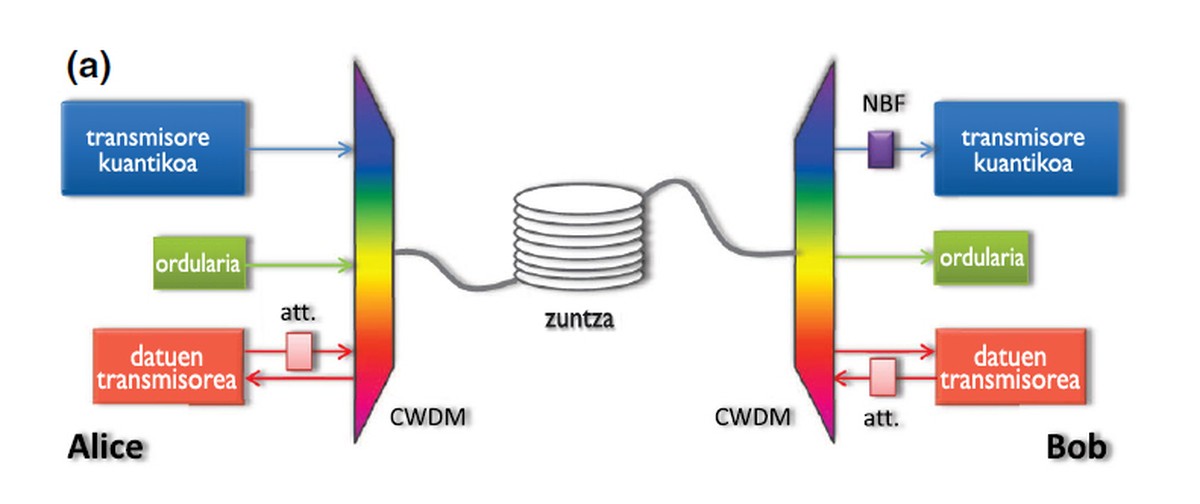They have developed the way to send quantum keys remotely using conventional optical fibers
One of the great practical limitations of quantum encryption is the difficulty in sending signals through conventional optical fibers. The traffic of the other signals generates too much noise to detect the encrypted key in a photon at destination and the greater the distance to travel, the harder it is to overcome noise interference. This difficulty has greatly limited the extent of quantum encryption. Its use is limited to a small number of entities that transport information through “black fibres”, that is, through specific optical fibres without other traffic. But it is expensive.
After overcoming the difficulty, researchers from Toshiba's Cambride Research Laboratory have sent quantitatively coded photon keys to 90 kilometers. For this purpose a conventional optical fiber with a usual volume of information has been used. The fiber, with a traffic of 1 Gbit/s in both directions, has been able to send the quantum keys at a speed of 8 kbit/s seconds to 90 km. 50 km to 500 kbit/s. 90 km is the greatest distance in history, 50 km ahead of the limit, but this time the speed achieved for this distance has been 50,000 times higher, according to researchers in the journal Physical Review X.
To detect the photon with encrypted key and filter the rest of photons, researchers have built a system with clocks of synchronized departure and arrival points. Knowing at what point it will arrive, the system is able to detect and decode it.

The challenge has been to build a device capable of detecting a photon in a short space of time. It works at the speed of the picoseconds, that is, on a scale of one million million seconds. The detector turns on with 100 picoseconds and reads the signal of the tiny interval in which the photon is expected to arrive with the encrypted key. The timing uncertainty is 10 picoseconds and the probability of another random photon coming in this short space is very low. Using this technique, researchers have been able to filter 90% of the random photons that reach the detector and successfully detect the quantum key. The distance of 90 km is equivalent to the expansion that can reach a large city, so the achievement has been considered an important step in the way of commercial use of quantum encryption.





